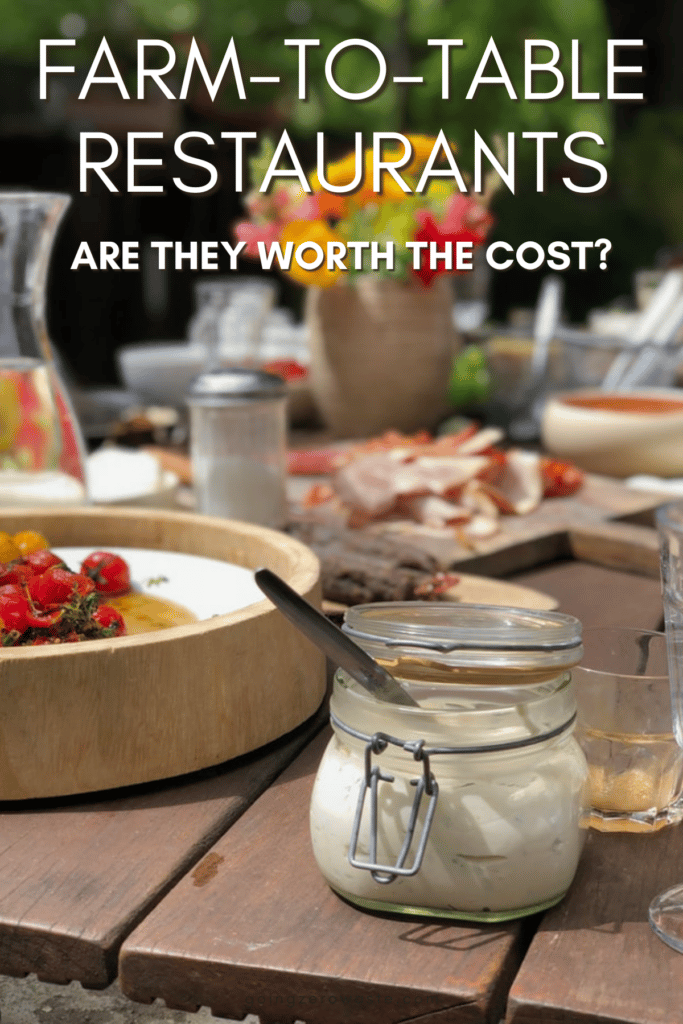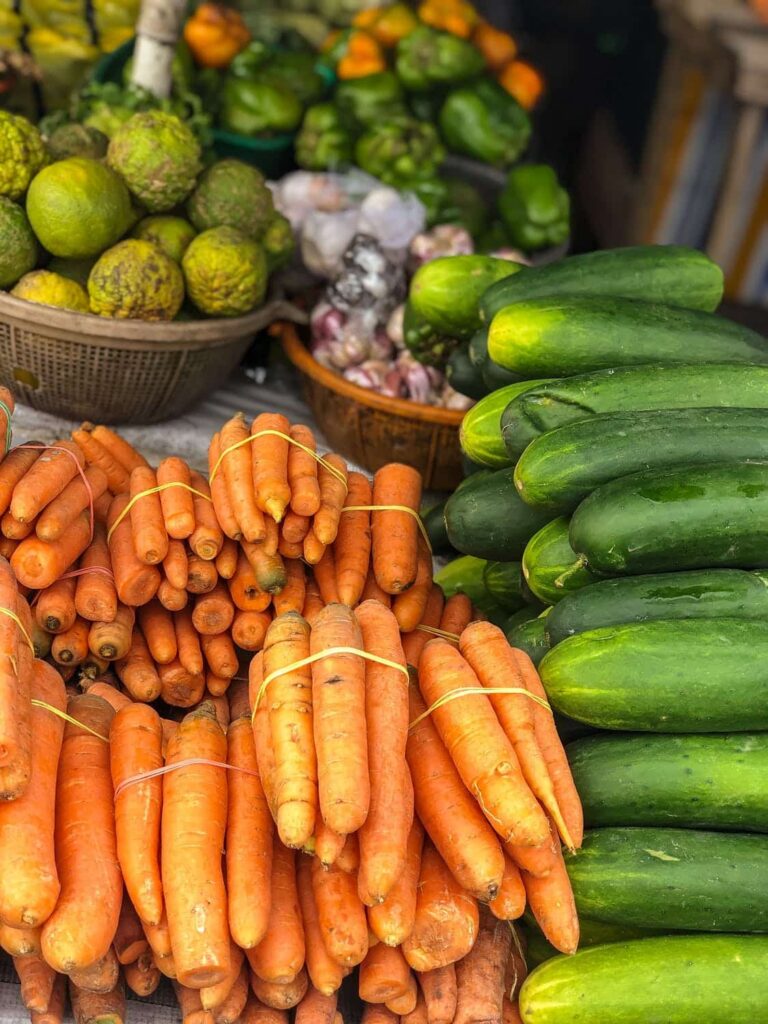Last Updated on February 27, 2023
Farm to table restaurants, or farm to fork restaurants, are more than just a specific type of restaurant or a catchphrase. It’s an established movement that’s gaining momentum with people becoming more conscious of where their food comes from, how it’s grown, and what goes into it.
Industrial agriculture with its mega-business model supplies most restaurants with cheaper, less environmentally careful products. The farm to table restaurant process requires more labor. Farm to table foods instead strive to source nutrient-rich, responsibly grown foods from local farms, regardless of price. If you value quality and responsibly grown food, farm to table restaurants are well worth the cost.

Table of Contents
farm to table restaurant
When you enter a restaurant and look at the menu, do you think about where each ingredient of each menu item was sourced? If you like the idea of fresh, locally grown food, then farm to table eating establishments are probably businesses you’ll want to support.
The first time I went to a true farm to table restaurant, I was on vacation and didn’t even know I was in a farm to table establishment. All I desired was some relaxation, fun, and of course, good food. I ordered from a menu that impressed me with its unique offerings, especially the variety of less common vegetables.
I ordered a salad and a vegetarian main course. When that salad arrived, it was nothing short of stunningly beautiful and oh so generous. It could have been my whole meal! Before me rested a bounty of freshly picked baby greens and other raw veggies including, oh yes, sweet, tender, pea shoots.
The first taste of that salad blew my mind. I mean it. I’d never tasted anything so vibrant and wonderful. It was the absolute best salad I’d ever eaten in my life. I had to check myself to keep from going all Meg Ryan — as in that famous scene from, “When Harry Met Sally,” — over this amazing salad!
After I regained my composure, I asked the waiter what this restaurant did to create such incredible salads. His reply, “We have our own garden just down the hill. Everything is picked fresh right before we serve it.” I loved my main entree a lot too, but oh, that salad! From then on, I was a fan of fresh-picked and locally sourced foods. After all, what is farm to table if not synonymous with fresh, delicious food?
farm to table foods close to home
There’s no denying that farm-fresh fruits and vegetables look and taste better than produce items that have been around longer. But doesn’t all produce come from farms? Technically, yes, but how it’s grown, soil health, and location all play into this.
When opting for out-of-season produce, many products have to be shipped across the country or even the world. As time ticks on, the flavors and nutrient qualities diminish. More sobering is the vast amount of transportation fuel used in these shipping processes.
Unsustainable agricultural practices, food loss, and food waste are huge contributors to greenhouse gas emissions. The compounded environmental impact of moving food all around the planet is still an unknown quantity.
With climate change a serious reality, we have to consider the ultimate cost of this convenience. When a restaurant truly embraces the farm to table movement, the food on their menu comes directly from local farms or farmer’s markets, not from hundreds of miles away. I like that!

supporting smaller and family owned farms
The big business of industrial agriculture has taken over most of the food supply in our country. The majority of these corporations are purely profit-driven.
Concern for the environment is a low priority, and the pesticides and herbicides they use are questionable, if not downright hazardous. And don’t even get me started on soil depletion.
Supporting smaller, local farms, especially those that choose to grow in an organic and regenerative way, is a powerful way to help our earth. Fewer trucks, trains, and ships — filled with food shipments — reduce pollution and curb environmental harm.
When you visit a restaurant that gets food for its menu from its own on-site gardens, that’s got to be the ultimate, low-impact way to provide meals to the public. Another great option is food picked in the same local area and served up in tasty, nutritious dishes that very day or evening.
In the 1940s, more than 40% of produce came from people’s gardens. Stores sold produce from nearby farmers, and restaurants and cafes cooked up food using plants and animals from down the road. You can help support this movement by growing your own food or joining a local CSA. However, farm to table foods are the next best thing, so frequenting farm to table restaurants is also great. I’d also highly recommend checking out the food sovereignty movement.

reasons to back the farm to table movement
- Supports local farms and economy
- Cuts down on greenhouse gasses
- Provides fresher, more nutrient-rich food
- Models a more environmentally sustainable way to eat
- The food tastes better
faqs
how much more expensive is farm to table compared to standard restaurant dining?
According to SupplyChain, a distribution and supply organization, you can expect to pay around “12%” more than you would for food from a standard restaurant serving similar dishes. In some locations, the cost could be even higher for a farm to table dining experience.
Labor costs and the extra efforts involved in ensuring that food is local, fresh, and sustainably sourced contribute to pricier meals too. Smaller farms tend to prioritize quality over quantity and have a hard time duplicating the lower produce and animal product costs generated by massive corporations.
This expense difference is reflected in higher prices on the farm to table menu. In order to remain profitable and stay in business, these restaurants simply have to charge more. In turn, they strive to serve better quality food and promote a kinder way of feeding people in a world that needs to heal environmentally.
so, is eating at farm to table restaurants worth the cost?
Perhaps we ought to ask, is eating at conventional, industrial agriculture supplied restaurants worth the high environmental price we’re all paying? When you consider what’s at stake for people and the planet, I’d say it’s worth making a determined effort to support more earth-conscious eating establishments as often as your budget will allow.
what is farm to table?
You’re not alone if you’re wondering, what is farm to table? The farm to table movement means everything on your table in this restaurant came directly from a farm, without stopping at a store, market, or factory. This means fresher, ethically sourced food for a difference you really can taste!
If you’re interested in more information about sustainable food practices, check out:









